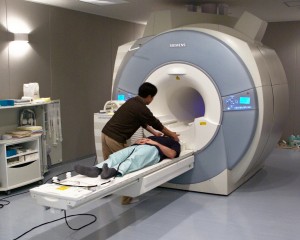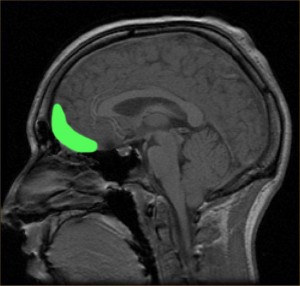By Yitong Li
When it comes to food choice, it’s almost an instinctual question: sometimes I want some chicken and greens for dinner and others I want some BBQ ribs and mashed potatoes. Compared to other decisions, such as which phone to buy or which shirt to put on in the morning, choosing food seems to be one of the few questions that we use little brain power for. Yet quite surprisingly, what we perceive as a gut choice may actually be a reflection of complicated activities in the brain.
A recent study published in Nature Neuroscience reported that in fact, our brains constantly think about the nutrients in each type of food. Our brains assign the nutrients different values, and eventually give the food an overall score that helps us to decide whether or not we want to eat it. Wait, are we still talking about human brain and not a robot? Yes, we absolutely are!

In this study, the researchers showed each participant pictures of 56 different food items and asked the participant to come up with a price that they would be willing to pay for the food. In this experiment, the price is a subjective value reflecting how willing a given participant is to buy the food and, at same time, also a measurable outcome that enabled the researchers to conduct statistical analysis. During this decision making process, researchers used a technique called functional MRI (fMRI) to capture brain images of the participant. fMRI can record and measure brain activities without needing to inject any chemical into the participants. Using images from fMRI, researchers can identify brain regions of high activities. The researchers then asked the participant to evaluate the nutrient content of the food (fat, sodium, carbohydrates, sugar, protein, and vitamins). For example, how much fat do you think this cake has? Again, these ratings turned subjective opinions into measurable numbers that allowed complicated statistical analysis.

What’s interesting is that, not only did the researchers prove that the brain is in fact very active during food valuation, but they also found out how our brain evaluates food. After analyzing all the fMRI images, the researchers found that activities in a part of the brain, the orbitofrontal cortex (OFC), were linked with food valuation. Shown as hot spots in the images, these activities presented defined patterns that enabled the researchers to group these hot spots and correlate them with the subjective nutrient content ratings the participants provided. For example, if hot spots 1, 2, and 3 always show up with food of high content rating for fat, protein and vitamins, and hot spot 2 always shows up with high content rating for fat and protein, then hot spots 1 and 3 are very likely the brain activities evaluating vitamins. Of course, the real statistical analysis is so much more complicated than this example.
Based on their findings, OFC has distinct regions that encode information about the content of fat, carbohydrates, protein, and vitamins. As a result, when we try to come up with a value for certain food, our brain sees the food as the mixture of all these nutrients and compiles the rating of each nutrient to generate the final score for the food. In other words, as much as it seems like a gut choice, choosing food turns out to be a complicated math problem that our brain solves in milliseconds.
In addition to the nutrient content, there are a lot of other subjective values that can affect our decision on food: taste, freshness, convenience to consume, culture and environment. While it may not be feasible to objectively evaluate all these factors in behavioral studies with current technologies and methods, I personally believe that our brains have regions encoding all this information. By integrating all these factors into a huge math equation, our brain calculates the final outcome, and hence decides whether we want to have certain food or not!
Edited by Rowan Beck and Matt Niederhuber

